Showing 49–60 of 383 results
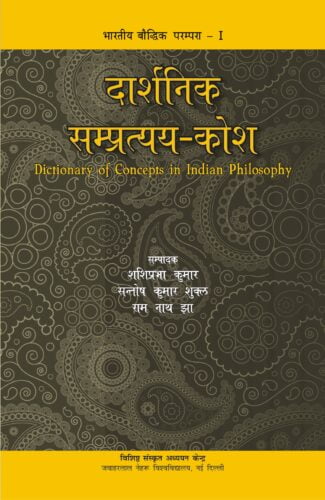
The present volume consists of a classical interpretation of important Indian philosophical concepts based on the original sources of each system thereof. Two hundred technical terms have been selected from significant schools/branches of Indian philosophy such as Veda, Mimamsa, Upanishads, Vedanta, Yoga, Samkhya, Vaisheshika, Nyaya, Jaina and Buddhism.
This encyclopaedic dictionary is one of its own kind in the sense that it is for the first time that a selection of original Indian philosophical concepts is done and the concepts are then explained by eminent scholars as per the Sanskrit texts of each school. There is no doubt that the dictionary will be useful for one and all: the inquisitive readers, researchers as well as the scholars of Indian Philosophy.
The present volume consists of a classical interpretation of important Indian philosophical concepts based on the original sources of each system thereof. Two hundred technical terms have been selected from significant schools/branches of Indian philosophy such as Veda, Mimamsa, Upanishads, Vedanta, Yoga, Samkhya, Vaisheshika, Nyaya, Jaina and Buddhism.
This encyclopaedic dictionary is one of its own kind in the sense that it is for the first time that a selection of original Indian philosophical concepts is done and the concepts are then explained by eminent scholars as per the Sanskrit texts of each school. There is no doubt that the dictionary will be useful for one and all: the inquisitive readers, researchers as well as the scholars of Indian Philosophy.
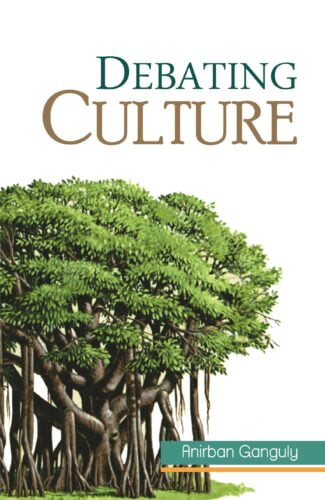
This book talks about the vision of our cultural thought-leaders like Ananda Coomaraswamy, Sri Aurobindo, Swami Vivekananda, Sister Nivedita, John Woodroffe, Syamaprasad Mookerjee and K.M. Munshi in making India a culturally strong nation. They remind us of our unique past and time-tested virtues and values, and the criticality of sustaining them while being modern in many ways
Barring the political agenda, the vital forces associated with India’s nationalist movement were moral, literary and artistic. Many cultural protagonists were vocal in saying that the regeneration of our society could happen through the revival of our arts and culture, not by politics and economics alone. This impulse was quite visible in cultural thought-leaders like Ananda Coomaraswamy, Sri Aurobindo, Swami Vivekananda, Sister Nivedita, John Woodroffe, Syamaprasad Mookerjee, K.M. Munshi and Jawaharlal Nehru. Rabindranath Tagore made a strong case for developing a complete and moving orb of Indian culture.
This book delves deep into the vision of these thought-leaders in making India a culturally strong nation, and warns us in different ways against becoming insularly modern. These personalities remind us of our unique past and time-tested virtues and values, and the criticality of sustaining them while being modern in many ways. They exult in our past and call upon us to be the torch-bearers of this legacy.
This volume, while doing an in-depth study of these Indian cultural activists, laments on the lackadaisical attitude of the leaders of Independent India in maintaining and promoting our art forms and long-revered culture. A renewed effort in rejuvenating our culture is the need of the hour, especially when its moorings seem to be loosening and its symbols diluting. It is an irony to call for the recognition of Indian culture in India!

This book talks about the vision of our cultural thought-leaders like Ananda Coomaraswamy, Sri Aurobindo, Swami Vivekananda, Sister Nivedita, John Woodroffe, Syamaprasad Mookerjee and K.M. Munshi in making India a culturally strong nation. They remind us of our unique past and time-tested virtues and values, and the criticality of sustaining them while being modern in many ways
Barring the political agenda, the vital forces associated with India’s nationalist movement were moral, literary and artistic. Many cultural protagonists were vocal in saying that the regeneration of our society could happen through the revival of our arts and culture, not by politics and economics alone. This impulse was quite visible in cultural thought-leaders like Ananda Coomaraswamy, Sri Aurobindo, Swami Vivekananda, Sister Nivedita, John Woodroffe, Syamaprasad Mookerjee, K.M. Munshi and Jawaharlal Nehru. Rabindranath Tagore made a strong case for developing a complete and moving orb of Indian culture.
This book delves deep into the vision of these thought-leaders in making India a culturally strong nation, and warns us in different ways against becoming insularly modern. These personalities remind us of our unique past and time-tested virtues and values, and the criticality of sustaining them while being modern in many ways. They exult in our past and call upon us to be the torch-bearers of this legacy.
This volume, while doing an in-depth study of these Indian cultural activists, laments on the lackadaisical attitude of the leaders of Independent India in maintaining and promoting our art forms and long-revered culture. A renewed effort in rejuvenating our culture is the need of the hour, especially when its moorings seem to be loosening and its symbols diluting. It is an irony to call for the recognition of Indian culture in India!
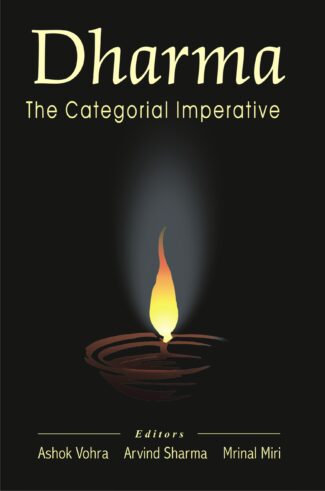
This book presents an in-depth study of the concept of dharma and acknowledges that Indian reality encompasses the elements of religion and dharma. It explores an alternative understanding of Indian civilization, independent of Western presuppositions as well as some contemporary issues relating to women and the dilemmas faced by the Indian diaspora.
Each stable culture and major civilization of the world consists of a distinct material base and a distinct ideational structure and has an inherent mechanism of striking its own equilibrium between the two. In the Indian tradition dharma is the balancing force. Religion and ideology are literally treated as synonymous with the Sanskrit word dharma. But dharma differs from religion in not being exclusive, and from ideology in possessing a transcendental dimension. The papers in this volume acknowledge that neither the word religion nor dharma can be discarded while looking at the Indian reality. They address themselves to the question: To what extent does the continued use of the concept of religion in the Indian context reflect reality, and to what extent does it distort or misrepresent its dhàrmic reality? Given India’s historical and the present existential situation these papers explore the question: Is an alterative understanding of Indian civilization possible, independent of Western presuppositions? The articles in the book present an in-depth study of the concept of dharma and its relation to the other purusharthas artha, kama and moksha, as well as with society, science, religion, Ayurveda and secularism. Relying mainly on the Vedas, epics, Manusmriti and the writings of Plato, Vivekananda, Gandhi et al., these papers explore some contemporary issues relating to women (stri-dharma) and the dilemmas faced by the Indian diaspora, especially in the UK and the US. These discussions have an appeal for a general reader as well as for scholars of Philosophy, Religion, Women’s Studies, Modern India and Sociology.
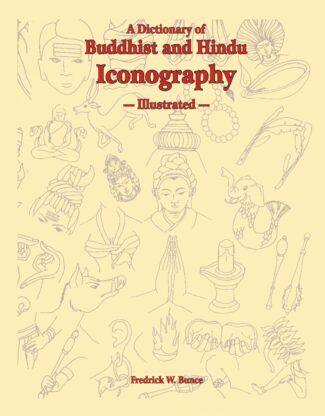
This Dictionary attempts to reveal the divine paradoxes of Buddhist-Hindu iconography by even interpreting the nuances of their iconic language. It explains, vividly, thousands of iconic representations (visual, conceptual symbols, images, objects, concepts, rites).
Man has, from times immemorial, exhibited a striking predilection for symbols. Which, through written words, drawings, sculptures or other visual/iconographic representations, seem to have shaped much of mankinds culture. From the simplest, yet eloquent, drawings on the walls of the prehistoric caves, through the sophistication of Egyptian imagery, the sculptural embroidered wealth of a Khajuraho, or the convoluted elegance of a Mannerist painting all interweave iconographic imagery so inextricably into their very core that, without its visual/didactic richness, these would be a mere shell, a hollow vanity! Veritably, our cultural scenograph will lose much of its aesthetic charm and meaning, once it is bereft of iconography. Over the centuries, Buddhisn and Hinduism (Brahmanical) have built up pantheon after pantheon, with a bewildering number of divinities, in varying forms and emanations and, significantly, with myriad iconographic attributes. Which, for both their definable precision and complex multi-interpretationality, not merely seem paradoxical, but may baffle even the specialists and the initiated as well. Here is just the Dictionary trying, for the first time, to help you see into the divine paradoxesof Buddhist-and-Hindu iconography and, simultaneously, interpret the very nuances of their iconic language. Painstakingly compiled by a distinguished scholar of Oriental/Buddhist Art, it is a Buddhist-and-Hindu Iconologia par excellence, spelling out vividly thousands of iconic representations, which these two of the worlds oldest, sustained faiths have left for all times to come. In its monumental effort to explain/interpret Buddhist-and-Hindu visual/conceptual symbols, images, objects, concepts and rites, the Dictionary extends the definition of iconography to embrace numerous peripheral/other terms, which either have immediate relevance to iconographic principles or are hard to dispense with in visualizing the true import of different icons. Dr. Bunces work has, at its base, his own first-hand observation of various temples in India, Nepal and several Southeast Asian countries; besides a number of authentic sources: both illustrated and verbal. Flawlessly illustrated: from cover to cover, it includes a compellingly readable introduction, an easy-to-understand Users Guide, extensive bibliographic references, and two well-planned lists to facilitate location of its each headword, each entry. Which all reinforce the Dictionarys indispensability to the specialists and the non-specialists who have often to grope for the essentials of Buddhist/Hindu iconographic complexities.

The book systematically studies various Hindu gods and goddesses based on Hindu sacred literature. It covers their earliest references and the evolution of their worship, their attributes and forms, and their signific-ance in the Hindu scheme of worship. It also includes references to many animate/inanimate sacred beings/things associated with the deities.
The Hindu pantheon of gods and goddesses has evolved over many millennia from a simple worship of elements and phenomena of nature to a complex system of myriad gods and goddesses of differing physical attributes, characteristic features and functions and each with different forms. The present Dictionary is an attempt to provide an in-depth yet comprehensive account of Hindu gods and goddesses referring to all the important religious sources. Based on Hindu sacred literature including the Vedas, epics and the Puranas, the book is a systematic study, in alphabetical order, of various Hindu gods and goddesses covering aspects such as the evolution of their worship and their earliest references in texts, stories of their birth and achievements, their attributes, their significance in the Hindu scheme of worship, their forms of representations, and their relationship with one another. It has references to not only personified beings but also other animate and inanimate sacred beings/things, seen in close association with the deities and worshipped by devotees, like Nandi, the bull, the snakes, the banyan and pipal trees, the saligramas and the banalingas. The adornments, vahanas, weapons and places associated with the deities are also elaborately discussed. The Dictionary will be an immensely useful reference work for scholars of ancient Indian mythology and religion as well as general readers willing to know more about Hindu gods and goddesses.

The book systematically studies various Hindu gods and goddesses based on Hindu sacred literature. It covers their earliest references and the evolution of their worship, their attributes and forms, and their signific-ance in the Hindu scheme of worship. It also includes references to many animate/inanimate sacred beings/things associated with the deities.
The Hindu pantheon of gods and goddesses has evolved over many millennia from a simple worship of elements and phenomena of nature to a complex system of myriad gods and goddesses of differing physical attributes, characteristic features and functions and each with different forms. The present Dictionary is an attempt to provide an in-depth yet comprehensive account of Hindu gods and goddesses referring to all the important religious sources. Based on Hindu sacred literature including the Vedas, epics and the Puranas, the book is a systematic study, in alphabetical order, of various Hindu gods and goddesses covering aspects such as the evolution of their worship and their earliest references in texts, stories of their birth and achievements, their attributes, their significance in the Hindu scheme of worship, their forms of representations, and their relationship with one another. It has references to not only personified beings but also other animate and inanimate sacred beings/things, seen in close association with the deities and worshipped by devotees, like Nandi, the bull, the snakes, the banyan and pipal trees, the saligramas and the banalingas. The adornments, vahanas, weapons and places associated with the deities are also elaborately discussed. The Dictionary will be an immensely useful reference work for scholars of ancient Indian mythology and religion as well as general readers willing to know more about Hindu gods and goddesses.
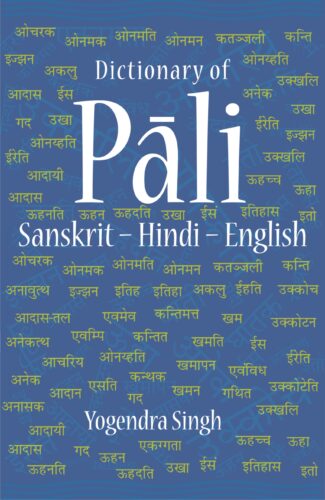
This dictionary provides meaning of Pali words in Sanskrit, Hindi and English. It will certainly prove useful to the learners of Pali language, students, scholars and researchers of Buddhist Studies, Pali Canons, and to those whose work is based on Pali.
As the teachings of the Buddha and the main Buddhist literature in original, as well as in translation, are contained mainly in Pali and Sanskrit languages, apart from Tibetan and Chinese as well, knowledge of Pali and Sanskrit is always essential to study the core of Buddhism — its basic teachings — and understand its basic concepts and perceptions. This voluminous edition has been offered in order to aid in the knowledge of the Pali and Sanskrit languages. Simple to comprehend and laying stress on clarity of meaning, the dictionary presents the Pali word at the beginning of each entry and gives its synonym in Sanskrit within bracket. It then proceeds to furnish the meaning of the word in both Hindi and English. The attempt is to make the dictionary useful to learners of the language and as a guide to those who are researching Buddhist works.
The book is meant to be a study companion to students and scholars of Buddhist Studies. It will be an indispensable aid to the readers and researchers of Pali Canons and works based on Pali and Sanskrit languages.
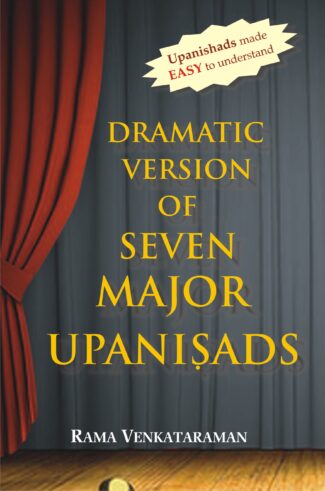
This book an English translation of the Tamil text expounds the wisdom contained in seven of the principal Upanishads in the style of short dramas. English transliteration and meanings of the Sanskrit verses are also included. The language is simple to follow which makes the Upanishads easily understandable by even a layman.
The Upanishads reveal the nature of true vidya: it is the knowledge which leads to the understanding of Brahman which alone is the Reality in the world of appearances. The dramas by Shri Mani Iyer based on the Upanishads render the meaning of the Upanishads in an interesting and captivating manner so that a wider audience can gain from the Upanishadic insight.
This book presents an English translation of Mani Iyers seven Upanishadic dramas, originally in Tamil, and includes English transliteration of the original Sanskrit verses. The dramas pertain to seven of the major Upanishads: Kena, Ishavasya, Prashna, Mundaka, Mandukya, Taittiriya and Katha. With reference to each drama, there is an introduction that reveals the major questions raised by the Upanishad, the manner in which the play proceeds, the nature of the story, its characters, and the conclusion of the play. The translation is simple to follow and possesses a rare clarity.
Because of the simple language and the clear meanings of the Upanishadic verses, this book will be valuable to readers in general, students in particular, and to those interested in knowing what our Upanishads contain and intend to convey.

This book an English translation of the Tamil text expounds the wisdom contained in seven of the principal Upanishads in the style of short dramas. English transliteration and meanings of the Sanskrit verses are also included. The language is simple to follow which makes the Upanishads easily understandable by even a layman.
The Upanishads reveal the nature of true vidya: it is the knowledge which leads to the understanding of Brahman which alone is the Reality in the world of appearances. The dramas by Shri Mani Iyer based on the Upanishads render the meaning of the Upanishads in an interesting and captivating manner so that a wider audience can gain from the Upanishadic insight.
This book presents an English translation of Mani Iyers seven Upanishadic dramas, originally in Tamil, and includes English transliteration of the original Sanskrit verses. The dramas pertain to seven of the major Upanishads: Kena, Ishavasya, Prashna, Mundaka, Mandukya, Taittiriya and Katha. With reference to each drama, there is an introduction that reveals the major questions raised by the Upanishad, the manner in which the play proceeds, the nature of the story, its characters, and the conclusion of the play. The translation is simple to follow and possesses a rare clarity.
Because of the simple language and the clear meanings of the Upanishadic verses, this book will be valuable to readers in general, students in particular, and to those interested in knowing what our Upanishads contain and intend to convey.
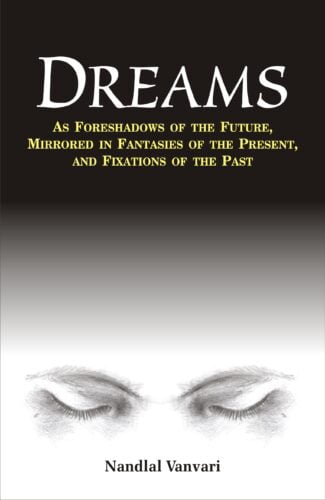
Dreams are generally viewed as displays of the subconscious and the unconscious, which know everything of the past, the present and the future, and constitute an interrelation between these. This book presents the viewpoints of scientists, psychologists and various religious and cultural traditions on the phenomenon of dreams.
This book is a study of the mysterious phenomenon of dreams. Dreams have fascinated mankind for ages. Civilisations over time and varied cultures have attempted to interpret the occurrence and meaning of dreams in different ways. Various theories have been extended from time to time to interpret this phenomenon. Dreams are generally viewed as displays of the subconscious and the unconscious which know everything of the past, the present and the future and constitute an interrelation between these.
The book analyses the states of thought, the sleep cycle and occurrence of dreams, presenting viewpoints of various religious and cultural traditions like the tantric view, that of the Guiana Indians, the Korean tradition, and so on. It discusses the views of scientists and psychologists on dreams, examining the beliefs of each school the Freud school, Jung school, Hall school among others in detail. It classifies dreams in different ways and deals with aspects of contemplation, emotions, and feelings in dreams. It also takes up dream healing and numerology, explaining how one can understand the structure of a dream and its significance and use it for achieving something in life. It contains accounts of dreams experienced by famous personalities in history which were closely linked to their real lives.

Dreams are generally viewed as displays of the subconscious and the unconscious, which know everything of the past, the present and the future, and constitute an interrelation between these. This book presents the viewpoints of scientists, psychologists and various religious and cultural traditions on the phenomenon of dreams.
This book is a study of the mysterious phenomenon of dreams. Dreams have fascinated mankind for ages. Civilisations over time and varied cultures have attempted to interpret the occurrence and meaning of dreams in different ways. Various theories have been extended from time to time to interpret this phenomenon. Dreams are generally viewed as displays of the subconscious and the unconscious which know everything of the past, the present and the future and constitute an interrelation between these.
The book analyses the states of thought, the sleep cycle and occurrence of dreams, presenting viewpoints of various religious and cultural traditions like the tantric view, that of the Guiana Indians, the Korean tradition, and so on. It discusses the views of scientists and psychologists on dreams, examining the beliefs of each school the Freud school, Jung school, Hall school among others in detail. It classifies dreams in different ways and deals with aspects of contemplation, emotions, and feelings in dreams. It also takes up dream healing and numerology, explaining how one can understand the structure of a dream and its significance and use it for achieving something in life. It contains accounts of dreams experienced by famous personalities in history which were closely linked to their real lives.
| There are no products |